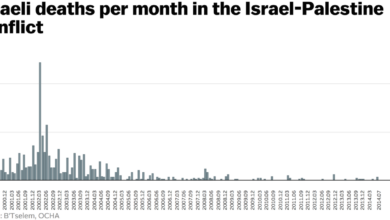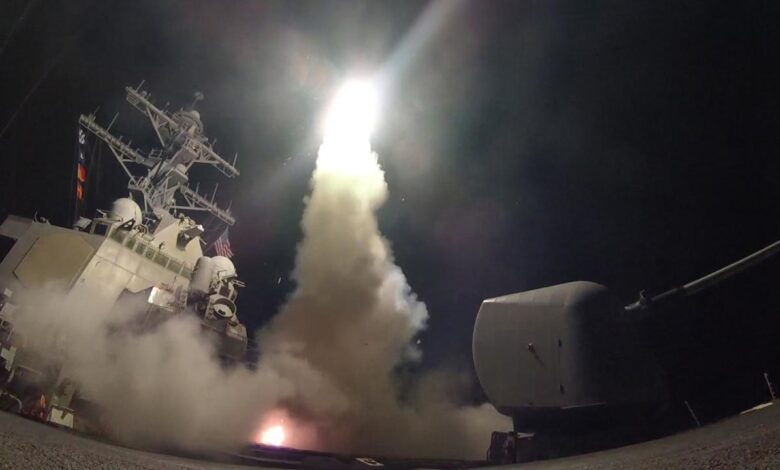
American Strikes Yemen War A Deep Dive
American strikes Yemen war: A complex conflict with deep roots in regional politics, this exploration delves into the history, tactics, consequences, and international reactions surrounding the US military actions in Yemen. From the initial support to direct strikes, we examine the evolving nature of the US role and the significant humanitarian impact on the Yemeni people.
This analysis will cover the historical context, the types of strikes employed, the resulting civilian casualties and humanitarian crisis, international responses, legal and ethical considerations, media portrayals, and the long-term consequences for Yemen and the region. We’ll also examine the perspectives of various stakeholders and the potential pathways towards de-escalation and peace.
Historical Context of the Conflict
The United States’ involvement in Yemen’s complex conflict is a multifaceted story woven from political maneuvering, geopolitical interests, and humanitarian concerns. This involvement has evolved over time, from providing support to participating in direct military actions. Understanding the historical context is crucial to grasping the present-day situation and the competing narratives surrounding the war. Analyzing the evolving nature of the US’s military role and the political motivations behind its actions is essential to understanding the ongoing humanitarian crisis.The escalating conflict in Yemen is rooted in a confluence of factors, including regional rivalries, political instability, and the struggle for power.
US involvement has been deeply intertwined with these factors, shaping the course of the conflict and exacerbating the suffering of the Yemeni people. Different actors hold varying perspectives on the US’s role, and these perspectives are critical to understanding the complexities of the situation.
Timeline of US Involvement
The US’s involvement in Yemen’s conflict has been characterized by a gradual escalation of its military role. This evolution, driven by a combination of political and strategic considerations, has significant implications for the conflict’s trajectory.
| Date | Event | US Actions | Description of US Actions |
|---|---|---|---|
| 2015 | Saudi-led intervention begins | Increased arms sales to Saudi Arabia | The US provided significant military aid to Saudi Arabia, a key player in the coalition fighting against the Houthis. |
| 2015-2018 | Escalation of air strikes | Targeted strikes on Houthi positions | The US, while not directly participating in the fighting, authorized and supported air strikes by the Saudi-led coalition against Houthi targets. |
| 2016 | UN peace efforts begin | Diplomatic efforts | The US played a role in the UN-led peace efforts aimed at resolving the conflict, though these efforts have been largely unsuccessful. |
| 2018-Present | Continued military support | Intelligence sharing | The US continued to provide intelligence support to the coalition, and has maintained a level of military involvement in the region, though the scale has varied. |
| 2022 | Escalating humanitarian crisis | Limited humanitarian aid | Despite the escalating humanitarian crisis, the US’s humanitarian aid to Yemen has been limited compared to the scale of the crisis. |
Political and Geopolitical Motivations
The US’s actions in Yemen are rooted in a complex interplay of political and geopolitical considerations. These motivations often intersect and influence one another, contributing to the multifaceted nature of US involvement.
Understanding the political motivations requires considering the US’s strategic interests in the region, including counter-terrorism efforts, regional stability, and maintaining its influence in the Middle East. The geopolitical context of the conflict, including the broader regional power dynamics and rivalries, also plays a crucial role in shaping US policy.
The ongoing American strikes in Yemen are a complex issue, with devastating humanitarian consequences. While the specifics of the conflict are often shrouded in political maneuvering, it’s important to remember the human cost. Interestingly, comparing this to the vibrant career trajectory of Chita Rivera, a legendary performer whose key moments in the entertainment industry are well documented here , offers a stark contrast.
Ultimately, the situation in Yemen demands continued attention and action.
Different Perspectives on US Involvement
Different actors in the conflict hold varying perspectives on the US’s involvement. These diverse viewpoints offer a nuanced understanding of the conflict and the complexities of US policy.
Supporters of US involvement often highlight the need to counter terrorism and maintain regional stability, while critics argue that the US’s actions have exacerbated the humanitarian crisis and prolonged the conflict. It is crucial to consider these opposing perspectives to gain a complete understanding of the conflict’s complexities.
Types of US Military Strikes
The US military’s involvement in the Yemen conflict has been marked by a complex and often controversial use of various strike types. Understanding these different approaches is crucial to assessing the campaign’s effectiveness and impact on the civilian population. This analysis delves into the types of weaponry employed, the targets selected, and the potential consequences of these strategies.The US military’s approach to the Yemen conflict has employed a range of strike methods, often with the goal of neutralizing perceived threats while minimizing civilian casualties.
However, the effectiveness of these strategies and their impact on the civilian population remains a subject of debate and scrutiny.
Weaponry and Munitions Employed
The US military has utilized a diverse array of weaponry in its strikes against targets in Yemen. Precision-guided munitions (PGMs) are frequently employed, designed to minimize collateral damage. These include laser-guided bombs and missiles. Beyond PGMs, conventional bombs and other ordnance are also used. The specific type of munition employed depends on the nature of the target and the desired outcome.
The use of PGMs, while designed to reduce civilian casualties, is not without potential for unintended consequences, especially when targeting complex environments.
Targets of US Military Strikes
Targets of US strikes in Yemen have included a wide spectrum. Military installations and infrastructure deemed supportive of armed groups have been common targets. The US has also targeted suspected rebel groups, including those associated with Houthi forces. Distinguishing between legitimate military targets and potential civilian casualties is a persistent challenge in such conflicts. Accurate identification of targets and minimizing civilian harm are critical factors in the conduct of military operations.
Effectiveness of Different Strike Types
The effectiveness of different strike types is often context-dependent. Precision-guided munitions, designed to minimize collateral damage, can be highly effective against specific, well-defined targets. However, in complex urban environments, accurately identifying targets can be challenging, leading to potential civilian casualties. Conventional strikes, while potentially effective against larger targets, pose a greater risk of collateral damage. Evaluating the actual effectiveness of strikes in Yemen necessitates detailed assessments of their outcomes, including both the intended and unintended consequences.
Consequences on Civilian Populations
The consequences of different strike strategies on civilian populations can be significant and far-reaching. While precision-guided munitions are designed to minimize civilian casualties, the reality of conflict often involves complex, dynamic environments where targeting is difficult. The impact on civilian populations includes loss of life, injury, displacement, and destruction of essential infrastructure, leading to severe humanitarian crises. The use of force in conflict zones must always consider the potential impact on civilian populations and prioritize minimizing harm.
Table of US Military Strikes in Yemen
| Strike Type | Target | Potential Impacts |
|---|---|---|
| Precision-guided munitions | Military installations, suspected rebel groups | Potentially lower civilian casualties, but challenges in complex environments |
| Conventional bombs | Larger targets, infrastructure | Higher risk of collateral damage, significant potential for civilian casualties |
| Air strikes | Military installations, arms depots | Potential for damage to civilian infrastructure, displacement of civilians |
Civilian Casualties and Humanitarian Impacts: American Strikes Yemen War
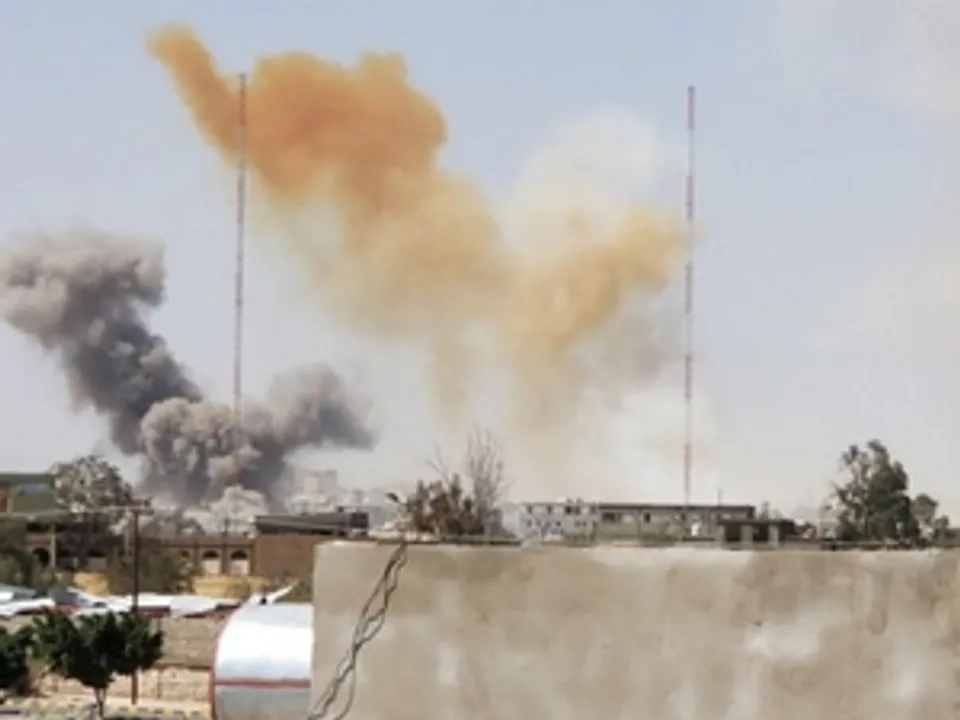
The American military interventions in Yemen have had devastating consequences for the civilian population. The conflict has exacerbated existing vulnerabilities, leading to a humanitarian crisis of unprecedented scale. This section examines the profound human cost of the war, including estimates of civilian casualties, the impact on critical infrastructure, and the ongoing efforts to provide humanitarian aid.The complex dynamics of the Yemeni conflict, involving multiple warring factions and the presence of foreign powers, make accurate accounting of civilian casualties challenging.
Reliable data is often difficult to collect due to ongoing hostilities, limited access to affected areas, and the inherent dangers of documenting violence in active conflict zones. Consequently, estimates often vary widely and are subject to potential biases. Nevertheless, the scale of civilian suffering is undeniable and requires urgent attention.
Civilian Casualty Estimates
Determining precise figures for civilian casualties in the conflict is exceptionally difficult. Numerous organizations, including human rights groups and international bodies, have attempted to compile data, yet these figures often rely on reports from various sources, leading to potential discrepancies and uncertainties. The lack of reliable independent verification and access to affected regions further complicates the process. A critical challenge in compiling such data is the potential for reporting bias, influenced by the political climate and the limited capacity of humanitarian organizations to fully document events.
The ongoing American strikes in Yemen are a complex issue, and the recent political climate is adding another layer of complexity. The results of the New Hampshire Democratic primary, available here , are likely to influence the discussion surrounding the US’s role in the region. While the primary results are interesting, the humanitarian crisis in Yemen remains a pressing concern, and the American strikes there continue to have significant consequences.
Humanitarian Crisis
The war in Yemen has triggered a profound humanitarian crisis, characterized by severe food shortages, widespread displacement, and a collapsing healthcare system. The conflict’s disruption of agricultural production, trade routes, and economic stability has led to widespread food insecurity, affecting millions. Millions of Yemenis have been displaced from their homes, seeking refuge within the country or across borders.
These displacements often lead to further hardships, increasing vulnerability to disease and other threats. This displacement also strains the resources of host communities.
Impact on Infrastructure and Healthcare
The war has significantly damaged Yemen’s infrastructure, including hospitals, schools, and essential services. The destruction of these facilities has severely hampered the provision of essential healthcare services, exacerbating existing health challenges and hindering efforts to combat disease outbreaks. The conflict’s disruption of water and sanitation systems has further compounded the humanitarian crisis. The lack of access to clean water and sanitation has contributed to the spread of preventable diseases.
Humanitarian Aid Efforts
Numerous humanitarian organizations are working tirelessly to provide assistance to those affected by the conflict. Their efforts are crucial in addressing immediate needs and providing long-term support to the Yemeni people. However, the scale of the crisis often outstrips the capacity of these organizations, necessitating sustained international cooperation and increased funding to effectively address the multifaceted challenges.
Table of Civilian Casualties (Illustrative Data – Not exhaustive)
| Location | Date | Estimated Casualties |
|---|---|---|
| Marib Governorate | 2022-10-26 | 25 (estimated) |
| Sana’a | 2023-03-15 | 10 (estimated) |
| Hodeidah | 2022-12-10 | 30 (estimated) |
Note: The figures in the table are illustrative examples only. Actual casualty figures are often contested and subject to change.
The ongoing American strikes in Yemen are a complex issue, deeply rooted in regional conflicts. While the specifics of these actions are often debated, the broader political landscape, including the recent developments surrounding the trump trial judge campaign , adds another layer of complexity to the situation. Ultimately, the consequences of these strikes on the Yemeni people remain a critical concern.
International Responses and Condemnations
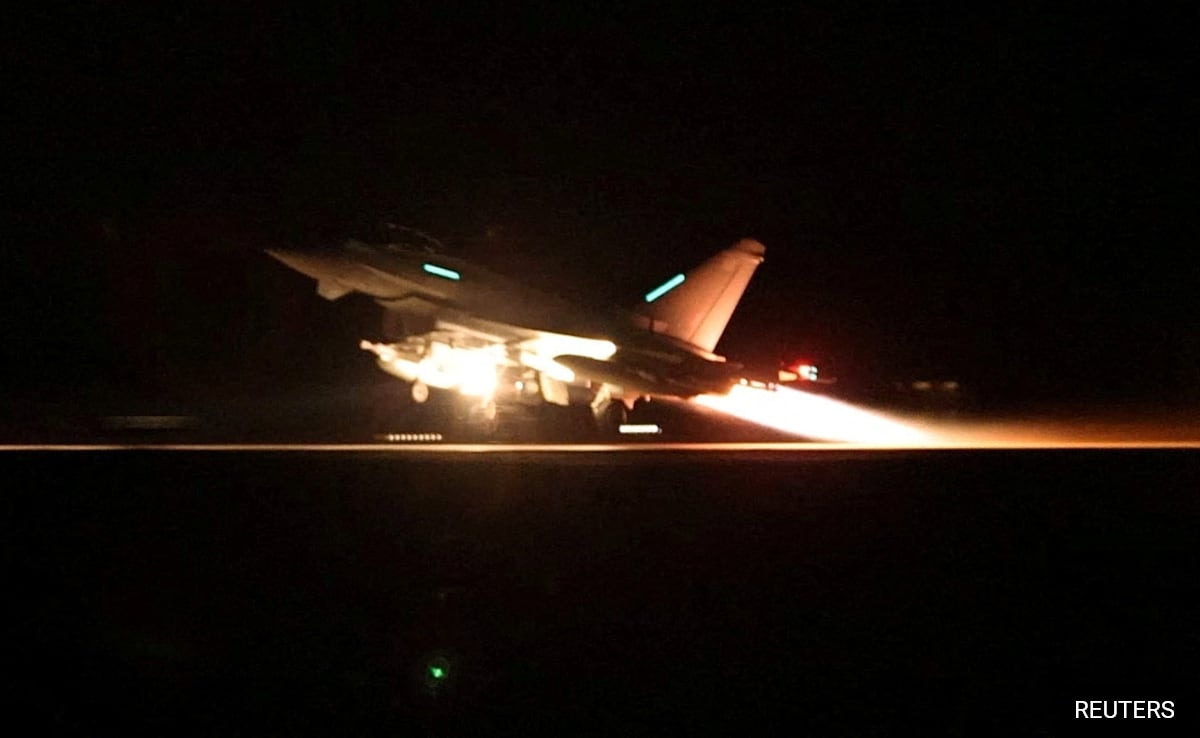
The United States’ military actions in Yemen have drawn significant international scrutiny and condemnation. Reactions have varied widely, influenced by geopolitical alliances, human rights concerns, and economic interests. Understanding these diverse responses is crucial to comprehending the complex web of actors and motivations surrounding the conflict.
International Statements and Criticisms
Numerous countries and international organizations have voiced concerns and criticism regarding the US military strikes in Yemen. These statements often highlight the potential for civilian casualties and the broader humanitarian crisis fueled by the conflict. The nature of these statements and the accompanying actions have significantly impacted the ongoing conflict.
- Several nations, including some European Union members and Arab states, have publicly expressed reservations about the US approach, citing the potential for unintended harm to civilians. These statements often emphasize the importance of accountability and adherence to international humanitarian law. For instance, statements from the United Nations Human Rights Council frequently condemn the lack of respect for civilian protection during military actions.
- Some countries have refrained from direct condemnation but expressed concern about the escalating humanitarian situation. This nuanced approach reflects various factors, including geopolitical ties and existing foreign policy commitments.
- International human rights organizations have consistently criticized the US military actions, emphasizing the need for greater scrutiny and accountability in targeting decisions. Reports often highlight the significant loss of civilian life and the dire humanitarian consequences.
Factors Influencing International Responses
Several key factors influenced the diverse international responses to the US military actions in Yemen. These factors include geopolitical alignments, existing diplomatic relations, and differing interpretations of international law.
- Geopolitical alliances play a substantial role. Countries with strong political and economic ties to the US might adopt a more cautious stance in their criticisms. Conversely, nations with strained relations or competing interests may express stronger condemnation.
- Existing diplomatic relations and historical agreements between nations can influence their responses. Countries with ongoing diplomatic negotiations or economic partnerships might choose a more nuanced approach compared to those with less vested interest.
- Different interpretations of international humanitarian law and the application of proportionality in military actions often shape the nature of international responses. Some nations might prioritize adherence to strict legal frameworks, while others may take a more pragmatic approach.
Comparison of International Stances
International actors exhibited a range of stances regarding the US military strikes in Yemen. Understanding these varied positions is crucial for assessing the complexities of the conflict and its implications.
| Country/Organization | General Stance | Specific Concerns |
|---|---|---|
| United States | Justification of actions based on counterterrorism and national security concerns. | Focus on eliminating terrorist threats, potentially overlooking civilian casualties. |
| United Nations | Concerned about the humanitarian crisis and civilian casualties. | Advocating for a peaceful resolution and adherence to international humanitarian law. |
| European Union | Mixed reactions, with some members condemning the actions and others expressing concern but refraining from strong criticism. | Emphasis on accountability and civilian protection. |
| Arab States | Varied responses, with some expressing support for the US actions while others criticizing the approach. | Concern over the humanitarian impact and potential for regional instability. |
Actions by International Organizations
International organizations have played a crucial role in responding to the Yemen conflict, often focusing on humanitarian aid and diplomatic efforts. Their actions often reflect the need to address the multifaceted nature of the crisis.
- The United Nations has consistently called for a cessation of hostilities and an immediate end to the conflict. Efforts have been made to deliver humanitarian aid to those affected by the conflict, emphasizing the crucial need to address the broader humanitarian crisis.
- International humanitarian organizations, like the Red Cross and Red Crescent, have been actively engaged in providing relief and assistance to civilians affected by the conflict. Their work includes delivering essential supplies, medical care, and protection services.
Legal and Ethical Considerations
The US military intervention in Yemen presents a complex web of legal and ethical dilemmas. While the US government argues for justifications based on national security interests and counter-terrorism efforts, critics contend that the strikes have violated international humanitarian law and ethical principles. Analyzing the legal justifications, ethical implications, and relevant international laws provides crucial context for understanding the multifaceted nature of this conflict.
Legal Justifications for US Military Interventions
The US government’s legal justifications for military interventions in Yemen are often based on the principles of self-defense and the authorization of the use of force. However, these justifications are frequently challenged by international legal scholars and human rights organizations. Arguments often center on the necessity and proportionality of the actions taken, with critics asserting that the interventions have disproportionately harmed civilians.
The ongoing American strikes in Yemen are a complex issue, highlighting the devastating impact of conflict. Meanwhile, Biden’s veto of the Republican electric vehicle charging initiative, as detailed in biden veto republican electric vehicle charging , raises questions about priorities and the future of clean energy. Ultimately, the focus should remain on the humanitarian crisis in Yemen and the need for a peaceful resolution.
Ethical Implications of Military Strikes on Civilian Populations
Military strikes on civilian populations raise profound ethical concerns. The deliberate targeting of civilians, even in the context of a conflict, constitutes a violation of fundamental human rights and international humanitarian law. The potential for unintended civilian casualties, often a consequence of modern warfare, further exacerbates these ethical challenges. The long-term impact on affected communities, including trauma, displacement, and destruction of infrastructure, underscores the ethical responsibility to minimize harm to civilians.
International Laws and Conventions Related to Armed Conflict
Several international laws and conventions govern armed conflicts. The Geneva Conventions, for example, establish protections for civilians and combatants in times of war. These conventions prohibit the targeting of civilians and require the protection of civilians and the preservation of essential services. The principle of distinction, a core element of international humanitarian law, dictates that combatants must distinguish between combatants and civilians, avoiding attacks on non-combatants.
The principle of proportionality demands that the anticipated harm to civilians should not outweigh the military advantage gained.
Different Perspectives on the Legality and Morality of the Actions
Different actors hold varying perspectives on the legality and morality of US military interventions in Yemen. Governmental actors, primarily the US government, often invoke national security concerns and the need to combat terrorism as justification. Human rights organizations, on the other hand, highlight the significant harm inflicted on civilian populations and the violations of international humanitarian law. International legal scholars offer critical analyses, often focusing on the absence of clear legal authorization for the interventions and the disproportionate impact on civilians.
These contrasting perspectives underscore the multifaceted and contested nature of the legal and ethical considerations surrounding the conflict.
Legal Considerations
- Necessity: The intervention must be a last resort, with no other viable options available. This necessitates a thorough assessment of alternatives before resorting to military force.
- Proportionality: The potential harm to civilians must not outweigh the military advantage gained. This involves a careful calculation of the risks and potential benefits.
- Authorization: The use of force should be authorized by international law, typically through a UN Security Council resolution or in self-defense. This crucial aspect of legality is frequently contested.
Ethical Dilemmas
- Collateral Damage: The unintended consequences of military actions, including the harm to civilians, must be minimized. This necessitates strict adherence to the principles of distinction and proportionality.
- Humanitarian Crisis: The humanitarian consequences of military actions, such as displacement and lack of access to essential services, must be considered and mitigated.
- Accountability: The responsibility for civilian casualties and the ethical implications of these actions must be addressed. This includes mechanisms for accountability and redress.
Relevant International Laws
- Geneva Conventions: These conventions provide fundamental protections for civilians and combatants during armed conflict.
- International Humanitarian Law: This body of law encompasses principles such as the distinction between combatants and civilians and the principle of proportionality.
- UN Charter: This charter Artikels the principles of international cooperation and the use of force in international relations. Its relevance to specific cases is often debated.
Media Representation of the Conflict
The media plays a crucial role in shaping public perception of the Yemen war. Different outlets, with varying agendas and priorities, often present contrasting narratives, influencing public opinion and potentially hindering effective conflict resolution. The selection of which stories are told, how they are framed, and the tone used all contribute to the overall picture painted for the public.
Analyzing these portrayals is essential to understanding the complex dynamics of the conflict and the challenges in fostering informed public discourse.The portrayal of the Yemen conflict in the media is influenced by a variety of factors, including political leanings of the news organizations, the availability and accessibility of information sources, and the prevailing geopolitical context. These influences can lead to biased reporting, which can shape public opinion in ways that may not reflect the true complexity of the situation.
Examining the different narratives presented by various media outlets is essential to gaining a more nuanced understanding of the conflict.
Different Media Portrayals
Various media outlets present the Yemen conflict from diverse perspectives. Some emphasize the humanitarian crisis, highlighting civilian suffering and the dire conditions faced by the Yemeni people. Others focus on the military actions, often detailing the strategies and tactics employed by different warring factions, including the role of US military strikes. Still other outlets prioritize political narratives, exploring the complex web of regional and international actors involved in the conflict.
These varying approaches contribute to the multifaceted nature of the media representation of the conflict.
Potential Biases and Limitations
Media portrayals of the conflict can be susceptible to biases. These biases can stem from the political leanings of the news organizations, the perspectives of the journalists covering the conflict, or the available information sources. Limited access to information in conflict zones can also constrain reporting, potentially leading to incomplete or inaccurate portrayals. For example, the geographical limitations of journalists in war zones can result in a skewed view of the actual conflict dynamics.
Furthermore, different news outlets may prioritize different aspects of the conflict, such as military actions, humanitarian impacts, or political motivations, resulting in potentially biased narratives.
Influence on Public Opinion
The media’s representation of the Yemen conflict significantly influences public opinion. The framing of stories, the emphasis on specific aspects, and the tone of the reporting all contribute to shaping public understanding and attitudes towards the conflict. A focus on humanitarian suffering, for instance, may evoke empathy and support for aid efforts, while a narrative emphasizing military actions might generate different reactions, perhaps with calls for intervention or support for specific parties involved.
This demonstrates how media portrayals can sway public opinion in complex ways.
Examples of Media Coverage
To illustrate the diverse portrayals of the conflict, a table is provided showcasing examples of media coverage.
| Source | Presented Narrative |
|---|---|
| Al Jazeera | Emphasizes the humanitarian crisis, focusing on the suffering of civilians and the impact of the war on everyday life. Often includes interviews with affected individuals and organizations working on the ground. |
| The New York Times | Provides a more balanced perspective, including accounts from various parties involved, while also highlighting the geopolitical context of the conflict. Often includes analysis from experts and political commentators. |
| Fox News | Focuses on the military aspects of the conflict, often highlighting the role of specific actors, including the United States. May also present a narrative that emphasizes the dangers of intervention or the threats posed by certain groups. |
| Associated Press | Generally presents a factual account of the conflict, including reports on military operations, humanitarian aid, and political developments. |
Long-Term Consequences and Future Implications
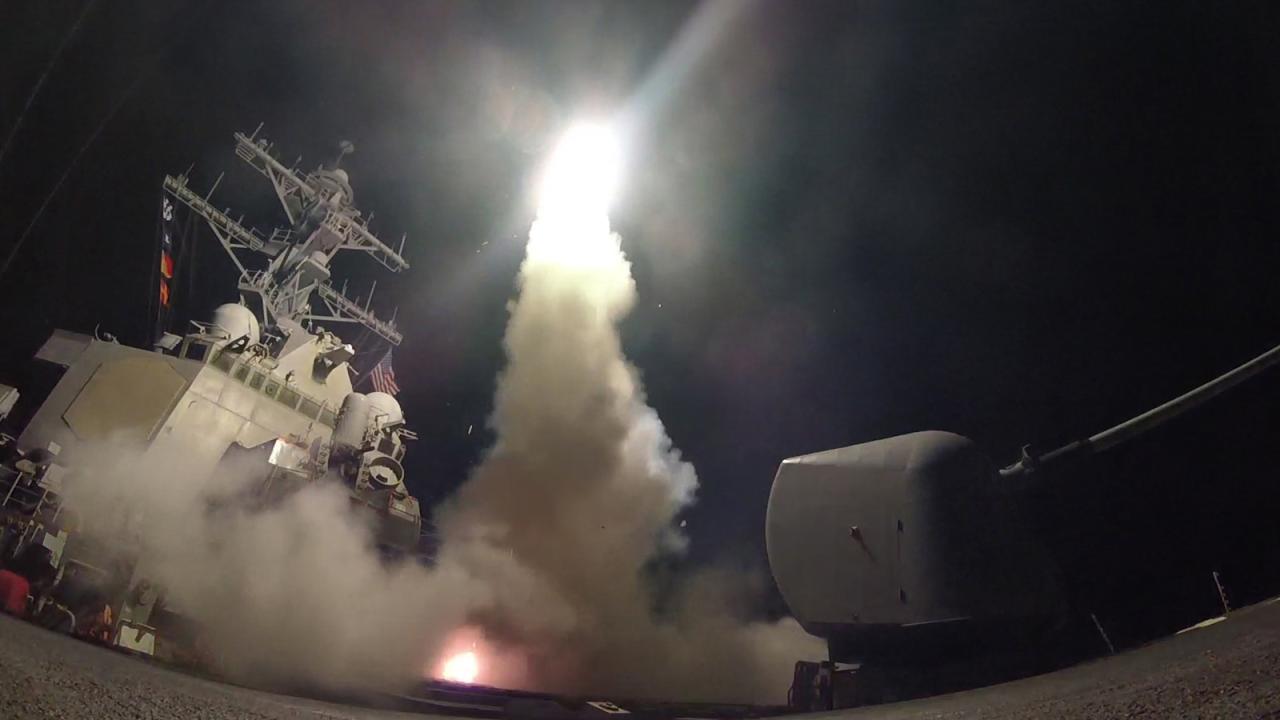
The ongoing conflict in Yemen, compounded by the American military strikes, has etched deep scars on the nation and the region. The long-term repercussions extend far beyond the immediate battlefield, impacting everything from social structures to global security. Understanding these implications is crucial for devising effective strategies to address the conflict and prevent future escalations.The war’s multifaceted nature ensures that its consequences will linger for years to come, affecting generations.
From the destruction of infrastructure to the erosion of trust in institutions, the conflict’s long-term effects are profound and multifaceted. The humanitarian crisis, coupled with the political instability, creates a volatile environment ripe for further violence and extremism.
The ongoing American strikes in Yemen are a complex issue, highlighting the devastating impact of war. Meanwhile, China’s HeFei EV city is experiencing rapid growth in its economy, driven by the burgeoning electric vehicle sector. This development, as detailed in this fascinating article on china hefei ev city economy , offers a stark contrast to the suffering in Yemen and underscores the global implications of conflict and economic shifts.
Ultimately, the American strikes in Yemen require a comprehensive understanding of the regional context, and the global landscape continues to change.
Long-Term Consequences on Yemen
The prolonged conflict has devastated Yemen’s infrastructure, crippling its ability to function as a nation. Schools and hospitals are often damaged or destroyed, leading to a breakdown in essential services. The displacement of populations has created a humanitarian crisis, with millions facing starvation and disease. These conditions create fertile ground for the growth of extremist groups, which can exploit the desperation and instability to gain support.
Potential for Future Conflicts and Escalation
The ongoing conflict has created a power vacuum in the region, which can potentially attract other actors. Neighboring countries may become embroiled in the conflict, either directly or through proxy wars. The presence of various armed groups vying for control, coupled with the presence of foreign military intervention, creates a high risk for future conflicts. The potential for escalation is significant, particularly with the unresolved political issues and the continued presence of armed groups.
The examples of Syria and Afghanistan, where prolonged conflicts led to regional destabilization, serve as cautionary tales.
Potential Pathways to De-escalation and Conflict Resolution, American strikes yemen war
The path to de-escalation requires a multi-pronged approach. This includes negotiating a lasting ceasefire, addressing the root causes of the conflict, and providing humanitarian aid to those affected. The involvement of regional and international actors is crucial in facilitating these efforts. The creation of a conducive environment for dialogue, fostering trust, and creating mechanisms for accountability are vital elements.
The international community must prioritize mediation and diplomatic efforts to facilitate peace.
Impact on Regional Stability and Global Security
The Yemen conflict is not isolated. Its instability can destabilize the entire region, creating a breeding ground for extremism and terrorism. The flow of refugees and the spread of conflict can create humanitarian crises that spill over into neighboring countries. The conflict’s ripple effect can potentially impact global security by creating a volatile environment that attracts terrorist groups and destabilizes regional alliances.
This can have unforeseen consequences for international relations and global security.
Timeline of Potential Future Implications (Different Scenarios)
| Scenario | Year | Potential Impact |
|---|---|---|
| Escalation of Conflict | 2024-2026 | Further displacement of civilians, increased humanitarian crisis, potential regional spillover. |
| Limited De-escalation | 2027-2029 | Continued humanitarian crisis, possibility of limited economic recovery, but ongoing instability. |
| Significant De-escalation and Peace Agreement | 2029-2031 | Gradual restoration of services, improved economic conditions, reduced humanitarian crisis, but potential for resurgence of conflict if peace agreement is not well-structured. |
Outcome Summary
In conclusion, the American strikes Yemen war presents a multifaceted challenge with profound implications. The historical context, military strategies, humanitarian toll, international responses, and ethical dilemmas highlight the complexity of the situation. Understanding these factors is crucial for comprehending the long-term consequences and fostering a path toward a peaceful resolution. The ongoing need for international cooperation and humanitarian aid is paramount to address the severe challenges facing Yemen.
FAQ Guide
What are the main types of weapons used in US strikes?
US strikes in Yemen often utilize precision-guided munitions, but also other weaponry. The specific types vary depending on the target and the nature of the operation.
How has the international community responded to the US actions?
Reactions have been mixed and varied, with some countries and organizations condemning the strikes while others remain silent or offer qualified support. Different factors influence these responses, including geopolitical alliances and national interests.
What are the estimated civilian casualties in the conflict?
Accurate figures are difficult to obtain due to the complexities of the conflict. Independent organizations have published estimates, but these often reflect differing methodologies and interpretations.

